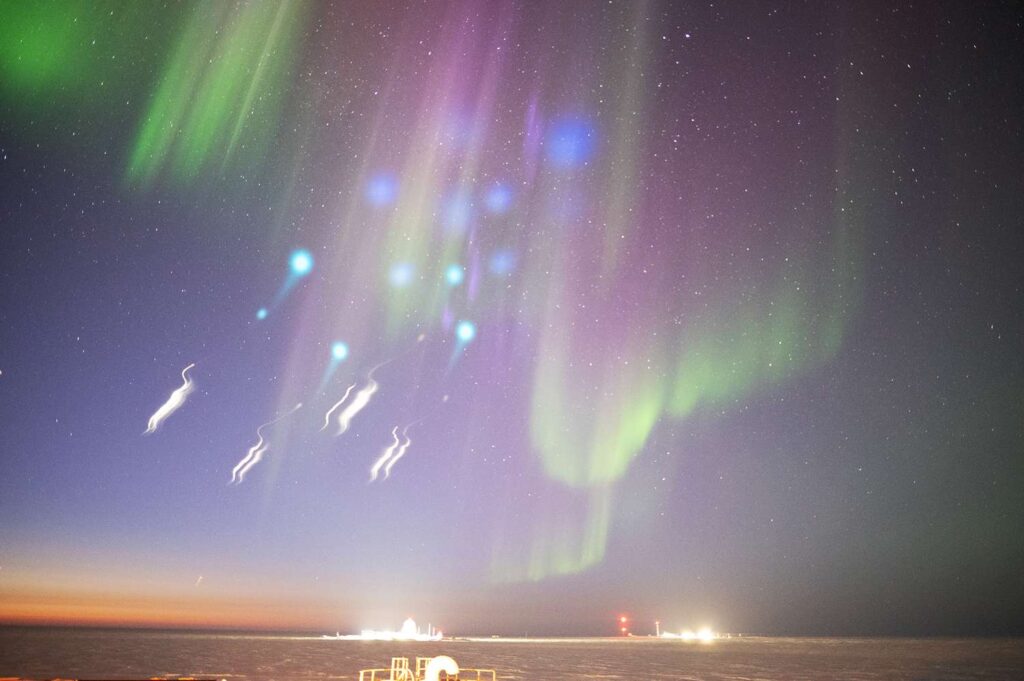NASA cranks up the intensity of the northern lights just when you thought they couldn’t be any more spectacular.
Three sounding rockets were launched by the space agency over central and northern Alaska. auroral substorm To study the impact of these substorms on Earth’s atmosphere. The project was named “Get it? Auroral Waves Excited by Substorm Onset Magnetic Events (AWESOME)Researchers from the University of Alaska Fairbanks led this study.
The first display took place on March 25. A 42-foot rocket was fired over central Alaska, and a 70 foot rocket was launched over the Arctic Ocean. Both rockets released their payloads—think ion guages, magnetometers, and vapor chasers; the latter released colorful puffs of gas—during an auroral substorm. The result is a beautiful light show with blue and purple streaks on a background of green and pink auroras.
Isabella Colello/Courtesy UAF
A faulty valve on the payload of a third rocket launched on 29 March created a very different light show. Instead of a swarm of dots, a double-ring of white light hung in the sky.
“That was a spectacular ring.” Mark Conde is a UAF space physics professor. said in a release. Anyone who was outside and looked up at that time would have seen a visually stunning and attractive display in the skies.
Despite the beautiful error of the last rocket, the data collected by the mission were deemed to be a success. The team plans to study the data in order better understand the dynamics and potential impacts of auroral activities on satellites, such as GPS.
”These launches are a great accomplishment in the effort to continue to research the impact of auroras and potentially improve space weather forecasting,” Aly Mendoza-Hill, a program executive at NASA, said.


